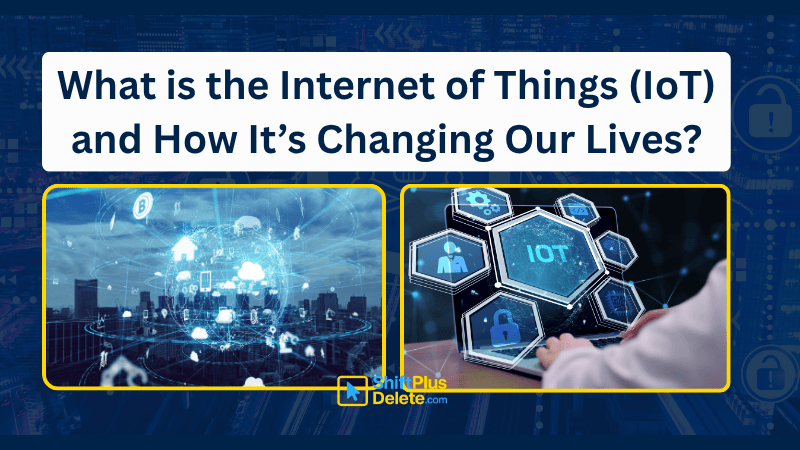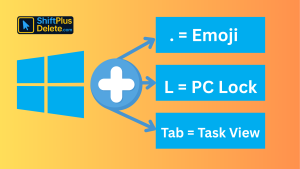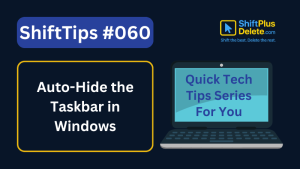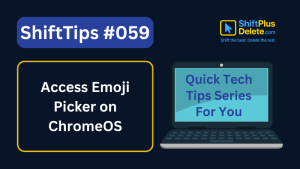
The Internet of Things (IoT) is not just a futuristic idea anymore—it’s part of our everyday reality. From smart homes and wearable devices to autonomous vehicles and connected cities, IoT is quietly revolutionizing how we live, work, and connect.
In this article, we’ll explore everything you need to know about IoT—what it is, how it works, real-life examples, key benefits, challenges, and frequently asked questions.
What is the Internet of Things (IoT)?
The Internet of Things (IoT) refers to a system of physical devices embedded with sensors, software, and network connectivity that allow them to collect and exchange data with other devices and systems over the internet.
In simple words, IoT allows devices to “talk” to each other, make decisions, and perform tasks—often without human involvement.
How Does IoT Work?
The IoT ecosystem works through four main stages:
1. Devices & Sensors
Devices are equipped with sensors to monitor the environment—like temperature, motion, pressure, or humidity.
2. Connectivity
Data from sensors is sent via networks like Wi-Fi, 5G, Zigbee, or Bluetooth to cloud platforms.
3. Data Processing
Cloud systems or edge computing platforms process this data to generate insights or trigger actions.
4. User Interface
Users interact through mobile apps, dashboards, or voice assistants to monitor or control devices.
Example: Your smart fridge detects low milk levels, notifies your phone, or even places an order automatically.
Real-World Applications of IoT
🔹 Smart Homes
The Internet of Things (IoT) powers smart lights, thermostats, locks, and virtual assistants like Alexa or Google Assistant for automation, energy savings, and security.
🔹 Healthcare & Medical Devices
Wearable IoT (The Internet of Things) devices track vital signs like heart rate, oxygen, and sleep patterns. Hospitals use remote monitoring to manage patients from afar.
🔹 Agriculture
Smart farming uses IoT sensors to monitor soil moisture, crop health, and automate irrigation, leading to improved productivity.
🔹 Manufacturing (Industrial IoT or IIoT)
IoT enables predictive maintenance, inventory management, and machine health monitoring, reducing downtime and increasing efficiency.
🔹 Logistics & Supply Chain
IoT (The Internet of Things) allows real-time tracking of goods, cold-chain monitoring, and dynamic routing for efficient deliveries.
🔹 Retail
Smart shelves, RFID tags, and foot traffic monitoring improve inventory management and customer experiences.
🔹 Autonomous Vehicles
An autonomous vehicle is a self-driving car that uses IoT, AI, and sensors to navigate, detect obstacles, and make driving decisions—without human input. These vehicles communicate with other cars (V2V), traffic systems, and GPS to ensure safety and efficiency.
🔹 Smart Cities
A smart city uses IoT (The Internet of Things) to optimize traffic flow, waste collection, water distribution, and lighting systems. For example, smart traffic signals reduce congestion by adjusting timing based on real-time vehicle data.
You May Like This to Read:
👉 10 Common Tech Beginner Mistakes: Everyone Should Know
👉 What is RAM and Why it Matters: 10 Must-Known Facts
👉 SSD vs HDD Comparison: Which Storage Drive is Best for You in 2025?
Why is the Internet of Things (IoT) Important?
Here’s why IoT is critical for the future:
- Automation – Eliminates manual tasks across homes and industries.
- Efficiency – Real-time monitoring reduces waste and optimizes processes.
- Personalization – Devices learn user preferences for tailored experiences.
- Cost Savings – Energy savings and predictive maintenance cut operational costs.
- Data-Driven Decisions – Real-time analytics support smarter actions.
Who is Using IoT?
IoT is used by:
- Consumers – Smartwatches, fitness trackers, smart home devices
- Businesses – Monitoring systems, automation tools, logistics solutions
- Healthcare Providers – Telemedicine and wearable health devices
- Governments – Smart city projects, pollution tracking, public safety
- Farmers – Smart irrigation and livestock tracking
When Did IoT (The Internet of Things) Start?
The concept emerged in the 1980s, but the term “Internet of Things” was coined in 1999 by Kevin Ashton. The rise of cheap sensors, cloud computing, and fast internet made IoT practical from the 2010s onward.
Benefits of IoT
- ✅ Greater efficiency and automation
- ✅ Improved resource management
- ✅ Better decision-making with real-time data
- ✅ Enhanced customer experience
- ✅ Lower operational and energy costs
- What Does Shift+Delete (ShiftPlusDelete) Do? 3 Powerful Tricks to Know
 You may already know that pressing the Delete key moves files to the Recycle Bin. But what happens when you press Shift + Delete instead?
You may already know that pressing the Delete key moves files to the Recycle Bin. But what happens when you press Shift + Delete instead? - Top 7 Free AI Tools That Are Actually Useful in 2025
 AI is no longer a buzzword—it’s now in your browser, your apps, and your daily workflow. But not every “AI tool” is worth your time. Some are just hype, while others truly help you work smarter. In this post, we’ve listed 7 free AI tools that are actually useful in 2025—tools that will save you… Read more: Top 7 Free AI Tools That Are Actually Useful in 2025
AI is no longer a buzzword—it’s now in your browser, your apps, and your daily workflow. But not every “AI tool” is worth your time. Some are just hype, while others truly help you work smarter. In this post, we’ve listed 7 free AI tools that are actually useful in 2025—tools that will save you… Read more: Top 7 Free AI Tools That Are Actually Useful in 2025 - 15 Powerful Hidden Windows Shortcuts You Should Know
 Whether you’re a casual user or a productivity enthusiast, mastering keyboard shortcuts is a game-changer. While most people know the basics like Ctrl + C or Alt + Tab, Windows is packed with lesser-known shortcuts that can seriously level up your workflow. These hidden windows shortcuts gems are not only efficient—they make using your computer… Read more: 15 Powerful Hidden Windows Shortcuts You Should Know
Whether you’re a casual user or a productivity enthusiast, mastering keyboard shortcuts is a game-changer. While most people know the basics like Ctrl + C or Alt + Tab, Windows is packed with lesser-known shortcuts that can seriously level up your workflow. These hidden windows shortcuts gems are not only efficient—they make using your computer… Read more: 15 Powerful Hidden Windows Shortcuts You Should Know
Challenges of IoT
Despite the benefits, IoT comes with several challenges:
- 🔐 Security Risks – Devices are vulnerable to hacking if not secured.
- 📉 Lack of Standardization – Different devices may not work together.
- 📊 Data Overload – Managing large volumes of data can be overwhelming.
- 🛠️ Device Management – Scaling to thousands of devices requires robust infrastructure.
The Future of IoT (The Internet of Things)
The future of IoT looks promising with developments in:
- ⚡ 5G networks – Ultra-fast and low-latency connectivity
- 🧠 Artificial Intelligence (AI) – Smart automation and decision-making
- 🌍 Sustainable Tech – Smart energy use, pollution control, and green buildings
- 💡 Edge Computing – Faster processing near the data source
By 2030, there will be over 30 billion IoT-connected devices, according to Statista.
Frequently Asked Questions (FAQs) About IoT
1. What is IoT in simple terms?
IoT stands for the Internet of Things—devices that are connected to the internet and communicate to perform smart actions automatically.
2. How is IoT used in daily life?
In smart homes, fitness trackers, voice assistants, security systems, and even in appliances like refrigerators and washing machines.
3. What industries use IoT the most?
Industries such as healthcare, agriculture, manufacturing, logistics, and smart city infrastructure rely heavily on IoT.
4. Is IoT secure?
It depends on how it’s implemented. Devices should have strong encryption, frequent updates, and secured networks.
5. What are smart cities in IoT?
Smart cities use IoT to manage services like traffic control, energy use, waste management, and public safety.
6. What is an autonomous vehicle in IoT (The Internet of Things)?
It’s a self-driving car that uses IoT sensors and AI to navigate roads, avoid obstacles, and operate without human drivers.
7. Can IoT help reduce energy consumption?
Yes. IoT can automate energy-efficient lighting, climate control, and even industrial processes to reduce waste.
8. How does IoT improve healthcare?
IoT devices track health metrics in real time, support remote patient monitoring, and even alert doctors during emergencies.
9. Are all smart devices part of IoT?
Most smart devices that connect to the internet and communicate with other devices or platforms are part of IoT.
10. What is the difference between IoT and AI?
IoT collects and shares data; AI analyzes and makes decisions based on that data. Together, they form a powerful tech duo.
Final Thoughts
The Internet of Things (IoT) is transforming our world, from how we live and travel to how we farm and heal. Its reach continues to grow as more devices get connected, enabling smarter, safer, and more efficient systems across industries.
As we move into a more connected future, understanding IoT is no longer optional—it’s essential.
👉 Want more tech insights?
Subscribe to our newsletter at ShiftPlusDelete.com to stay updated on the future of technology.
You May Read This:
-
✅ ShiftTips #064: Use Focus Assist/Do Not Disturb
Avoid distractions by turning on Focus Assist (Windows) or Do Not Disturb (Mac). Keep your workflow clean and uninterrupted.
-
✅ ShiftTips #063: Take Screenshots Like a Pro
Capture your screen in seconds using built-in shortcuts on Windows or Mac. No third-party tools needed — fast, simple, and effective.
-
✅ ShiftTips #062: Turn On Night Light/Shift
Enable Night Light (Windows) or Night Shift (Mac) to cut blue light and sleep better. Simple steps make it quick and effective.
-
✅ ShiftTips #061: Boost Your Flow Master Alt+Tab Like a Ninja
Jump between apps like a ninja — no mouse needed.
-
✅ ShiftTips #059: Access Emoji Picker on ChromeOS
Add emojis on Chromebook in any text field.







